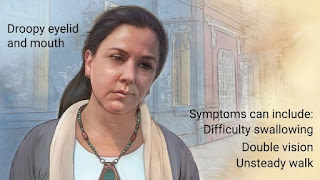A Snapshot of the History of Developmental Disabilities in the US
My first experience visiting an institution for people with intellectual and developmental disabilities was in high school, on an Allied Health field trip to Ellisville State School in Mississippi. I am sure it was not the intent of my teacher to discourage me from wanting to work with this particular population, but for many years I concluded that I was not gifted to work with such people. Our visit did not include much history of disabilities; it was more of a tour the facilities. I remember passing one room with a window on the door. As soon as my group stopped to observe, a teenage boy inside the classroom got up from his seat and begin to bang his head on the door. Our tour guide made light of it and continued to take us through different parts of the campus. I have carried that image and moment with me from 11th grade until now. For me, it was traumatic to see a someone intentionally harm themselves and even worse, there was no context regarding his condition.
Bruce L Keisling, PhD, Executive Director of the Boling Center for Developmental Disabilities, gave a presentation on the history of disabilities in American. It was very enlightening to go through the early stages of treatment (or lack there of) for individuals with disabilities and the advocacy that has continued from OT practitioners, people with disabilities, and celebrities. Things such as involuntary sterilization and selective reproduction were legal and it wasn't very long ago that the maltreatment of people with intellectual and developmental disabilities was accepted in America. Learning about the mass burial of people in Minnesota made me cringe; the lack of dignity and respect that was shown is unforgettable. I could not help but to think about the intersectionality of individuals who had a disability, as well as another minority status (e.g., an African American living in the Jim Crow Era who also had an intellectual and developmental disability).
It is a thrill to know that through advocacy, legislation such as Medicare and Medicaid (1965) and The (American) Rehabilitation Act (1973) began to change the trajectory for those who live with a disability. I love the effort to normalize living with a disability, through inclusive college programs that make space for students who have a disability. Also, introducing new language regarding intellectual and developmental disabilities is a positive change. I am excited to learn more about the Boling Center and how this experience will help me be a better OT practitioner in the future.
Bruce L Keisling, PhD, Executive Director of the Boling Center for Developmental Disabilities, gave a presentation on the history of disabilities in American. It was very enlightening to go through the early stages of treatment (or lack there of) for individuals with disabilities and the advocacy that has continued from OT practitioners, people with disabilities, and celebrities. Things such as involuntary sterilization and selective reproduction were legal and it wasn't very long ago that the maltreatment of people with intellectual and developmental disabilities was accepted in America. Learning about the mass burial of people in Minnesota made me cringe; the lack of dignity and respect that was shown is unforgettable. I could not help but to think about the intersectionality of individuals who had a disability, as well as another minority status (e.g., an African American living in the Jim Crow Era who also had an intellectual and developmental disability).
It is a thrill to know that through advocacy, legislation such as Medicare and Medicaid (1965) and The (American) Rehabilitation Act (1973) began to change the trajectory for those who live with a disability. I love the effort to normalize living with a disability, through inclusive college programs that make space for students who have a disability. Also, introducing new language regarding intellectual and developmental disabilities is a positive change. I am excited to learn more about the Boling Center and how this experience will help me be a better OT practitioner in the future.



Wow, Allison, the image you've described here almost takes my breath away. I am glad you found your way to OT.
ReplyDelete